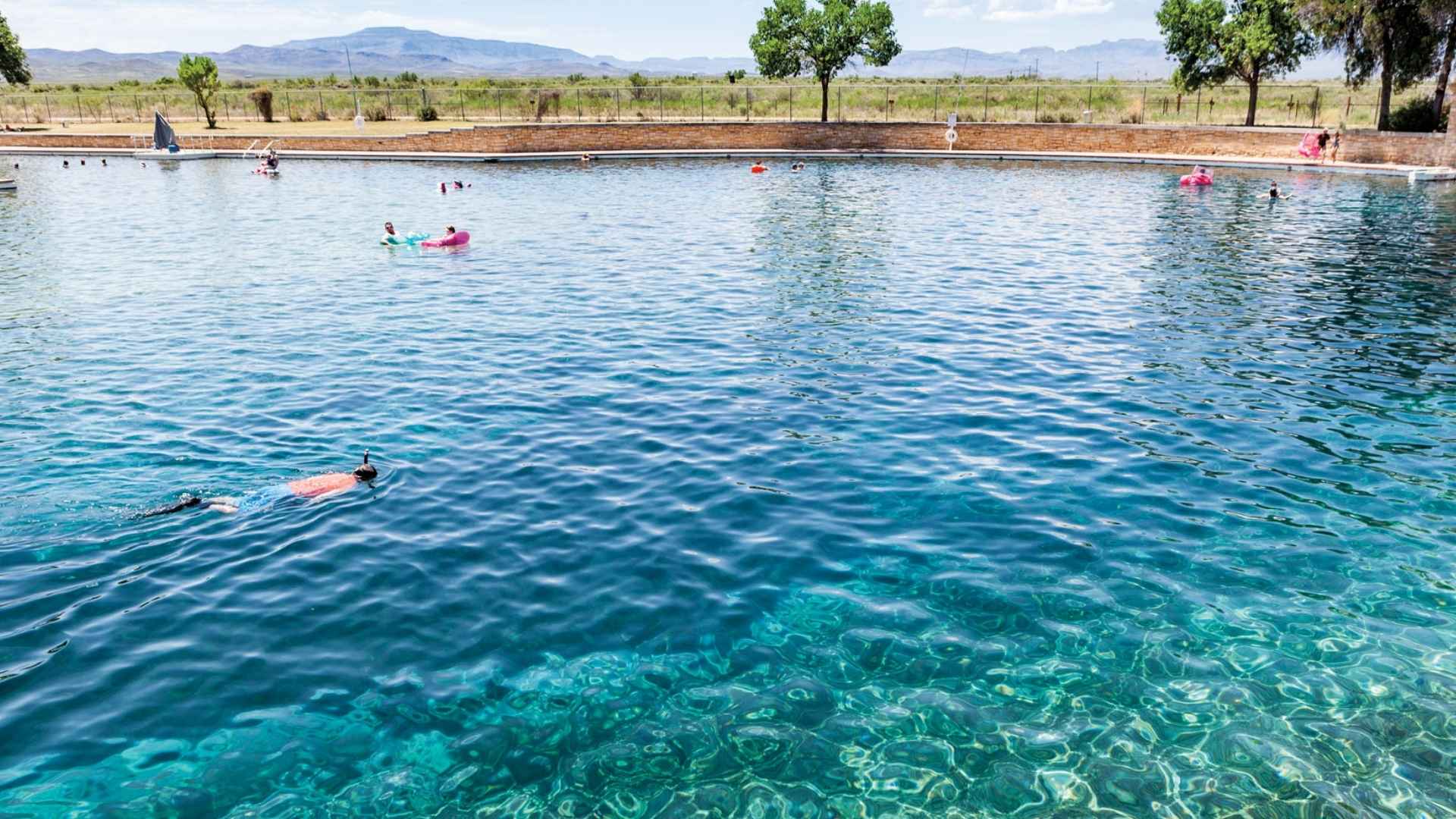Hidden in West Texas, Balmorhea State Park offers crystal‑clear water, year‑round 70‑degree swims, and a welcome break from city crowds.
Tourists speeding along Interstate 10 may picture nothing but cactus and sand, yet a two‑hour detour reveals the world’s largest spring‑fed swimming pool—1.3 sparkling acres where desert heat meets Caribbean‑blue bliss. Everyone from weekend road‑trippers to hard‑core scuba fans finds something to love, and the park’s strict 900‑visitor daily cap keeps the vibe relaxed.
Why Balmorhea’s mammoth spring‑fed pool feels like a Caribbean lagoon
Fed by the San Solomon Springs, the pool stays a balmy 72‑76 °F all year and plunges 25 feet—seven feet deeper than Austin’s famous Barton Springs. That warmth plus mirror‑clear visibility lets snorkelers glide over endangered Pecos gambusia and Comanche Springs pupfish without the usual wetsuit shiver.
Families appreciate the shallow beach entry, while certified divers can drop into the deeper west end for an underwater canyon‑style wall. Not bad for the middle of the Chihuahuan Desert, right?
| Feature | Balmorhea State Park | Barton Springs Pool |
|---|---|---|
| Size | 1.3 acres | ~1 acre |
| Maximum depth | 25 ft | 18 ft |
| Typical water temperature | 72‑76 °F | 68‑70 °F |
| Daily visitor limit | 900 | None |
Above: Bigger, deeper, warmer—stats that explain Balmorhea’s cult following.
Activities that turn this remote desert oasis into an outdoor playground
Beyond swimming, what else can you do? Plenty!
- Scuba and snorkel: Explore limestone ledges without ocean currents.
- Stargaze: Low light pollution means Milky Way views that will blow up your camera roll.
- Hike nearby Davis Mountains: Tackle the 6‑mile summit trail to Mount Livermore for sunrise panoramas.
- Overnight in history: Sleep at the 1930s Indian Lodge, complete with its own pool and on‑site diner.
These options make a single‑day splash trip tempting, but a weekend lets you slow down and soak up true desert serenity.
How the park supports local economy and endangered species conservation efforts
Built by the Civilian Conservation Corps in the Great Depression, Balmorhea still fuels the region. More than 200,000 annual visitors inject millions into Reeves County through gas stations, family‑run cafés, and small hotels. Irrigation from the spring network keeps surrounding farms green, while protected desert wetlands shield rare fish, snails, and amphipods from extinction. Consequently, every entrance fee helps keep both livelihoods and ecosystems afloat.
Need a few packing tips? Grab reef‑safe sunscreen, a wide‑brim hat, and cash for the entrance fee; cell service is patchy, so download maps beforehand.

